Jump to:
The number of BBQ grills on the market is immense. But before you even get around to choosing a brand and a model, you need to settle on what type of BBQ is right for you.
For example, one of the biggest differences is the question of what fuel you want to use for your BBQ. The pros and cons of charcoal vs gas BBQs depend a lot on convenience versus traditional flavour.
But you’ve got a lot more choice on offer than simply fuel type. That’s why in this guide, we’re going to list all the different types of BBQ grill with pros and cons to help you pick one.
Let’s get into it!
How to Pick a BBQ Grill
Before we start breaking types of BBQ grills down into categories, let’s put some ground rules in place.
When choosing a BBQ (any type of BBQ, that is), you should be thinking about:
| Space | How much do you have available? Do you have room to put your BBQ in storage? |
| Location | Like space, where will your BBQ go? Do you have a garden or a patio? |
| Budget | What’s a good price range for the BBQ grill you’re after? |
| Cooking requirements | What cooking surface area do you need? How many people are you likely to be cooking for? What food will you be cooking? |
| Utilities | Depending on what type of BBQ grill you go for, this may not apply. Otherwise, you might need access to a power point or even a gas line. |
| Time and effort | Do you want to light up the grill after a hard day and eat soon after? Are you happy to wait and take your time building a fire? |
| Cooking | How experienced are you? How passionate are you about the ‘perfect BBQ’? |
If you can work down this list and answer every question, then picking a BBQ grill from this guide will be easy.
For example, if you live in an apartment with a small balcony and you’re not allowed open flames – cross pellet grills off your list.
Or, if you’re the type of person who likes to pull a BBQ out the bag on a whim – count out a charcoal grill.
As we go through this guide, you might notice that there are similarities across different types of BBQ grill. Something like a charcoal kettle BBQ and a freestanding gas BBQ could be classed as covered even though they’re totally different.
And so on and so forth.
For now, let’s start with charcoal grills.
Charcoal BBQ

As we say, there’s a lot of crossover between BBQ categories and types. For example, when we say ‘charcoal BBQ’, all our minds probably go to the same place. I.e. a Weber Kettle BBQ (and maybe a kangaroo in the background).
But a charcoal BBQ can be anything from a portable tray BBQ to a freestanding charcoal grill.
So before we get into portable charcoal grills, let’s have a look at the big boys. Freestanding charcoal grills are built with thick cast iron. They’re built in the classic BBQ style and usually have a removable charcoal tray.
This is different to kettle charcoal BBQs where you just build your charcoal fire in the base.
If you want to know more, then check out the low-down on charcoal vs gas BBQs.
Charcoal Grills: The what?
Depending on size and model, charcoal grills will have an air intake vent at the bottom that can be adjusted manually. Larger freestanding models will also have charcoal trays to lay your fire. As air passes over lit charcoals, it infuses the food with flavour and exits via a vent at the top.
Charcoal Grills: The why?
Charcoal grills are popular because they’re easy to use and offer a rich, smokey flavour. Their adjustable air intake and exhaust also mean that you can stabilise your cooking temperature pretty well when you get it going. This makes them suitable for tougher cuts of meat and slower cooking as well as high temperature searing.
Key takeaways
PROS
- Charcoal grills can generally reach higher temperatures than gas BBQs
- A higher temperature means a better sear with classic grill marks
- Less expensive
- Can utilise direct and indirect cooking (and smoking)
- You can play around with wood and charcoal for different flavours
- They’re traditional for a true BBQ experience
- Smaller/portable charcoal BBQs are portable for trips and camping
CONS
Charcoal & briquettes can be tricky to light
- Long heat up/cool down process (around 30-45mins pre-heating)
- Time-consuming – fires will need tending
- Messier and require more clean-up
- Cost of charcoal over time
- Smaller cooking surface and therefore capacity (not great for large-scale catering)
- More susceptible to bad weather when cooking
But these aren’t all necessarily disadvantages. A lot of it will depend on your disposition.
For example, the idea of tending to a fire and a few hours stood out at the grill might appeal to you. And if using un-treated charcoal, you might see the ash as free feed for your garden.
Who’s it for? If you want a traditional flavour and experience and you’re happy to throw yourself into the set-up and cleanup, then a charcoal BBQ is for you.
Top tips: If buying a freestanding charcoal grill, opt for a cast-iron model that’s going to last. If you’re going for a smaller model, opt for a steel body.
How to light a charcoal BBQ
Depending on the type of charcoal BBQ you’re using, build a small mound of charcoal briquettes in the base of your BBQ. Make sure they’re sitting on a quick-to-light material like the bag they came in, newspaper, or even fire starters. Ensure there’s enough room for airflow.
Once lit, allow the charcoal to heat up until white-hot. Replenish and start barbequing as necessary.
Bear in mind that accelerants like lighter fluid, lighting gel, or fire starters may affect the flavour of your food.
How to use a charcoal BBQ
Once you’ve built and lit your charcoal fire, cover your BBQ with a lid (where possible) and leave it to heat. Once you have pre-heated your BBQ (anywhere from 15-45 minutes depending on the fire), check the temperature. Remove the lid and transfer food onto the grill rack and cook to your preference.
How to BBQ chicken on a charcoal grill
Depending on your cut of chicken and preference, either apply a dry rub or marinade. Bring out to your charcoal grill in a container. Once you’ve built your charcoal fire and allowed your charcoal BBQ to pre-heat, remove the lid. Transfer chicken straight on to the grill rack.
Either sear and flip or allow to cook through, turning the chicken occasionally. Cook until juices run clear then remove from the grill rack onto plates or a new (clean) dish. You can always test to see if the chicken is barbecued by cutting into the centre.
Bear in mind this will only indicate all pieces are cooked if you barbecue everything together in batches.
Cleaning Your BBQ
And if you want more tips on cleaning charcoal or gas BBQs, check out our BBQ cleaning guide.
Kettle BBQ
We said earlier that a Weber kettle BBQ is pretty much the classic silhouette for charcoal BBQs.
Kettle grills get their name from their rounded appearance. They have a fully removable lid and the grilling occurs in the base or bottom half. They give a classic smokey BBQ flavour and are portable. This does mean that they are usually cheaper, made from thinner metal, and they retain heat.
Kettle BBQs: The what?
Kettle BBQs are a simple design with a round bottom and a removable lid. Kettles stand on tripod legs and may feature wheels for portability and storage. Charcoal goes in the bottom onto a small, elevated grate and ash and debris falls away into the base or an ash catcher.
Kettle BBQs: The why?
Kettle charcoal grills are portable and easy to use. Their metal construction makes them lightweight and they’re usually on the cheaper end. This means they’re a great, durable option to take away with you. A compromise on the smaller cooking area also means they require less fuel.
You can use direct grilling or indirect grilling and even smoking to cook food. Kettles are well suited to searing, rendering fat, and cooking thick cuts of meat and fish.
Key takeaways
PROS
- Fairly portable for use camping, at the beach, or at picnics
- You can experiment with different charcoal and woods for flavour profiles
- Fairly cheap
- Easy to use
- Don’t take up a lot of space
- Great for steaks, ribs, tuna
CONS
- Hard to regulate temperatures in rain, cold, and windy conditions
- Charcoal fuel costs more over time than natural gas or propane
- Requires attention and clean-up
On top of that, while they are portable, we’d still recommend using a kettle BBQ cover when not in use. And whilst kettle BBQs are great for beginners, it’s still wise to have some fire safety and management knowledge.
How to light a kettle BBQ
Remove the grill rack and build a small mound of charcoal briquettes in the base of your kettle BBQ. Add accelerants and fire-starters like lighting gel and/or scraps of newspaper. Ensure there is room for sufficient airflow. Keeping a safe distance, light the fire using a safety lighter.
How to use a kettle BBQ
Remove your charcoal kettle BBQ’s lid and build a small pyramid of briquettes with an accelerant like lighting gel or fluid. Allow charcoal to burn until white-hot, replace the lid and preheat your BBQ. Once at temperature, remove the lid and transfer food to the kettle grill.
For non-stick cooking, coat your grill rack with some vegetable oil before use. Using tongs and gloves, remove the lid to check on and flip food as necessary.
Drum and Barrel BBQs


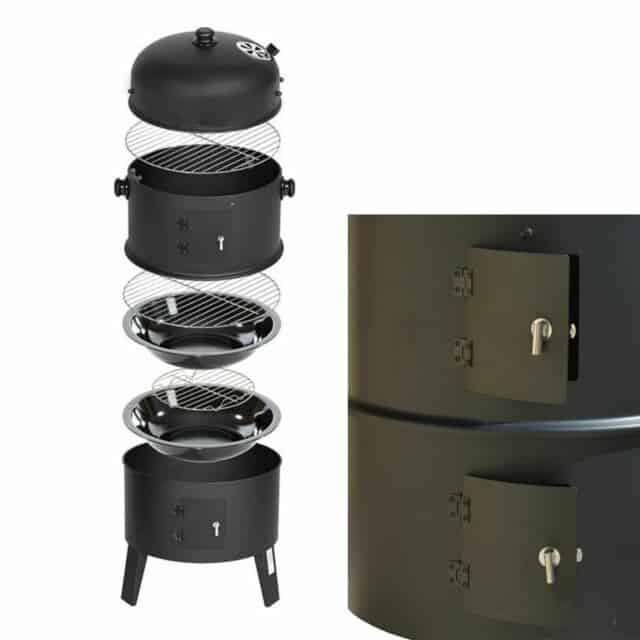
Barrel BBQs, barrel smokers, oil drum BBQs; they go by a lot of different names. Originally made straight from discarded metal oil drums, this style of BBQ has undergone a bit of a makeover.
Barrel BBQs: The what?
Nowadays, you can get charcoal barrels that are smokers. With a firebox, they’re great at slow-cooking and smoking meats. With opening sections and adjustable charcoal trays, you can adjust heat and flavour intensity.
Barrel BBQs can come in either horizontal or vertical options. Some versions may also run off only wood rather than charcoal, like a pellet BBQ (which we’ll discuss next).
Barrel BBQs: The why?
Barrel BBQs offer the cooking capabilities of large cast-iron charcoal grills usually at a lower price point than their counterparts. You may see some models with side boxes on a barrel bbq smoker.
PROS
- Adjustable for varying flavours and cooking
- Excel at slow cooking and smoking
- Start at an accessible price point
- Different to a standard BBQ
CONS
- All that experimenting with wood pellets and briquettes can get costly
- Not great at quick, high-temperature cooking
- Although fairly easy to – they still require more cleanup than a gas grill
How to make a barrel BBQ
If you’ve got an old oil barrel, some scrap metal, fixings, and tools like an angle grinder, you can follow the video below.
BBQ Smoker and Pellet Grills



The next step up from a charcoal barrel BBQ would be to go for a full-on smoker. A smoker BBQ (or wood pellet grill) is probably what comes to mind when we think of proper American BBQ.
All those tastes of the south with slow-smoked brisket and marinaded ribs probably came out of a BBQ smoker.
Smokers and pellet grills: The what?
Smoking has long since been a popular method of cooking and preserving food. But BBQ smokers broke onto the scene in the 20th century. They’re usually portable (often on wheels) and look like slightly shrunken charcoal grills.
Technically, smokers might include the drum and barrel BBQs we mentioned in the last section. A lot of smokers also have a separate side smoker box. They excel at cooking and smoking at low to moderate temperatures and indirect grilling. They’re great at tough cuts of meat like brisket and ribs as they break down fats over time.
Smokers and pellet BBQs have become increasingly popular because of their dual-cooking capabilities. A hybrid between a smoker and a grill, they’re popular with cooks who want more control over their smoke and flavour. Simply fill up your BBQ smoker’s hopper with wood pellets and get to work!
Smokers and pellet grills: The why?
If you’re after both a traditional barbequing experience and taste, then a smoker might be right for you. Just bear in mind, messing around with wood pellets and getting fires going can be fun but it can also be expensive and time-consuming.
If you’re into customising your cooking, though, you can get wood pellets in a range of woods that offer flavours like hickory, maple, cherry, and apple.
Another selling point for smokers is that you can simply put food in and leave it – it requires little monitoring. On the other hand, you’re less likely to get a good sear from your smoker BBQ.
Many smokers will feature a crank to adjust the grill height, giving you control over your smoking.
Key takeaways
PROS
- Smokers and pellet grills are versatile – allowing for dual-cooking
- Clean-up is fairly easy with a simple removable ashtray
- Aesthetically traditional
- Offers control over the smoking experience
CONS
- Fires can take a while to get going then settle enough to cook or smoke over
- Amount of choices do mean potential long-term expenses on things like wood pellets
- Depending on the size of your grill’s hopper, you may have to refill it throughout the long cooking process
How to use a BBQ smoker
Start by adding charcoal briquettes and wood chips to your ashtray or hopper in a pyramid formation. If your smoker has one, fill up your water tray - this will evaporate during cooking. Light your fire and once it’s going, add meat to the grill. Adjust your grill height with the smoker crank. Monitor the temperature and replenish fuel as necessary.
Ceramic Grills – Kamado Grill


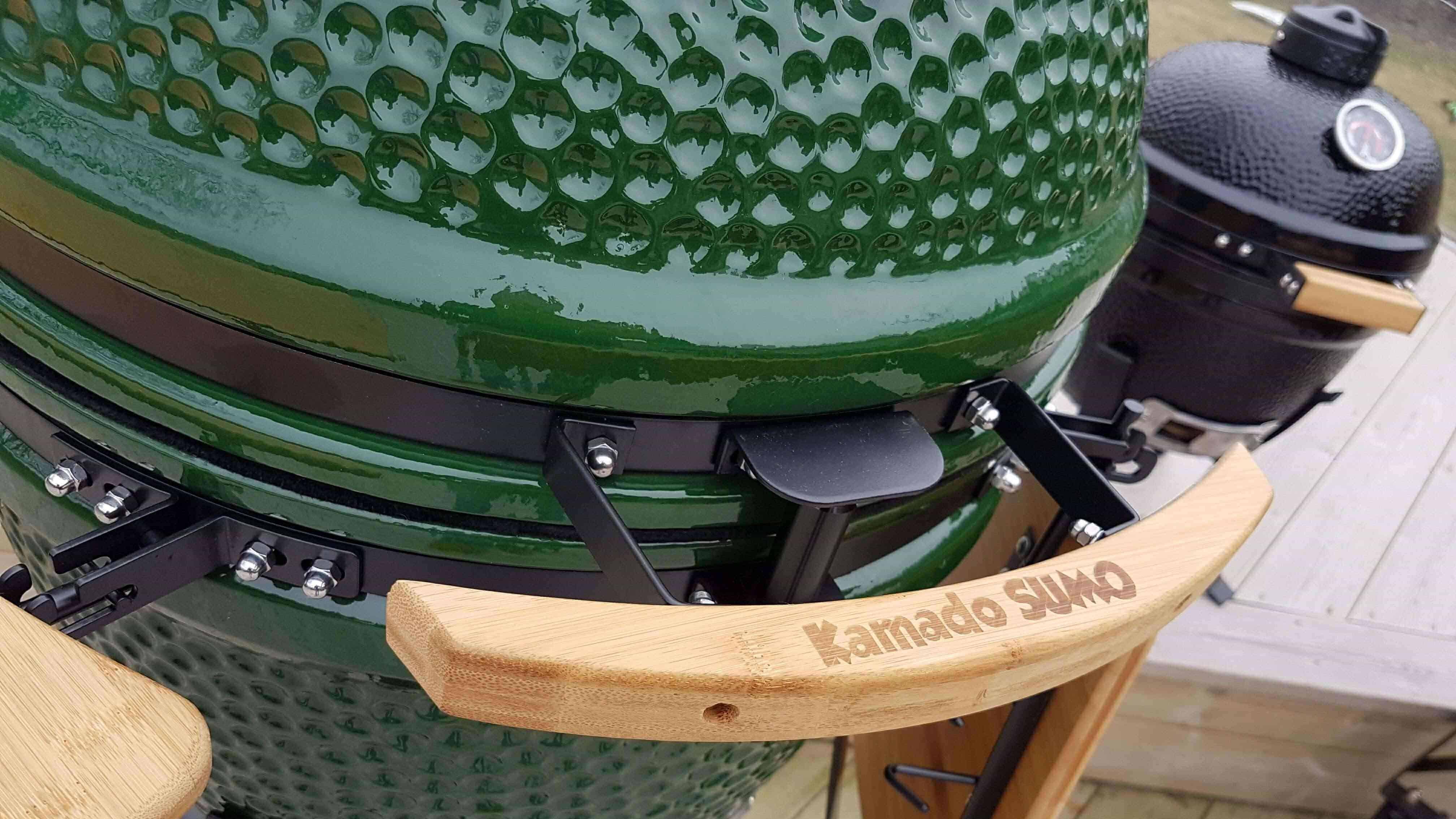
Kamado grills are both technically ceramic and charcoal grills. See? We told you it gets complicated trying to define BBQ grills by fuel or style alone.
Built like a big pot (hence the name of the ‘big green egg’ model), a Kamado grill is great at maintaining its temperature. It can be used for different types of cooking (including pizza-making) and holds heat well over several hours.
So if you’re looking to cater for a lot of people and cook over long periods without constant set-up, a Kamado grill might be for you.
Kamado BBQ: The what?
Kamado BBQs are charcoal grills in a ceramic shell. The Kamado vessel itself and style of cooking has also been around for a long time. Examples can be found in Japanese history all the way to India’s tandoors and Iran’s tanoors.
It’s similar to a kettle BBQ but a lot larger and the lid is attached. Limiting the circulation of air inside the Kamado grill keeps meats tasty and juicy over long cooking periods. The insulated shell uses lump wood charcoal as fuel and to give flavour.



Kamado BBQ: The why?
Kamado grills have been known to circulate and retain heat better than standard charcoal kettle grills. You can also use them to sear food quickly at high temperatures or for slow-cooking. Kamados can even be used as a sort of oven, allowing you to roast meats.
Kamado-style cookers or ‘vessel grills’ allow you to vary air intake to reduce or increase the heat depending on what you’re cooking. This makes them highly versatile and a one-stop shop for barbecues.
Key takeaways
PROS
- Kamados allow for prolonged cooking without having to tend the fire constantly
- Based on 3000 years of cooking experience from different cultures
- Can reach temperatures (750℉) high enough to sear food
- Good for batch cooking
- Versatile cooker – able to smoke, roast, grill, sear
- Insulted and covered – good for use in bad weather
- Easy-to-clean
CONS
- Relatively expensive for a proper ceramic Kamado
- Said to be portable, but that depends on model size and your ability
- Not for novice grillers
- Good insulation also means they take a long time to cool down
What is a Kamado grill?
A Kamado grill is a large, insulted, ceramic egg. It’s a charcoal grill that uses wood lump charcoal and can smoke, grill, sear, and even roast food. By limiting airflow they keep foods moist and juicy and are perfect for larger-scale batch cooking.
How to cook pizza on a Kamado grill
To cook pizza on a Kamado grill you will need a pizza stone. Place this on top of your Kamado grill grate. Then add your pizza on top and heat your grill to around 500℉. Keep an eye on your pizza and remove with a pizza peel once cooked to your taste. Slice and serve.
How to use a Kamado grill
Lay your lump wood fire in the base of your Kamado and light it to get it going. To do this you can either use accelerants like firestarters or a charcoal chimney. Make sure your air vents are open.
Close the lid and heat your Kamado BBQ to the desired temperature. When it’s nearing optimum temperature, partially close the top vent to maintain temperature. Depending on what style of cooking you’re aiming for, open the lid, place food on the grill and either close or leave the lid open.
E.g. keep it open at a high temperature if you want to keep an eye on searing meat. Alternatively, close the lid and monitor the temperature for smoking and slow-cooking.
Check out this guide for more on Kamado Skills.
Gas BBQs


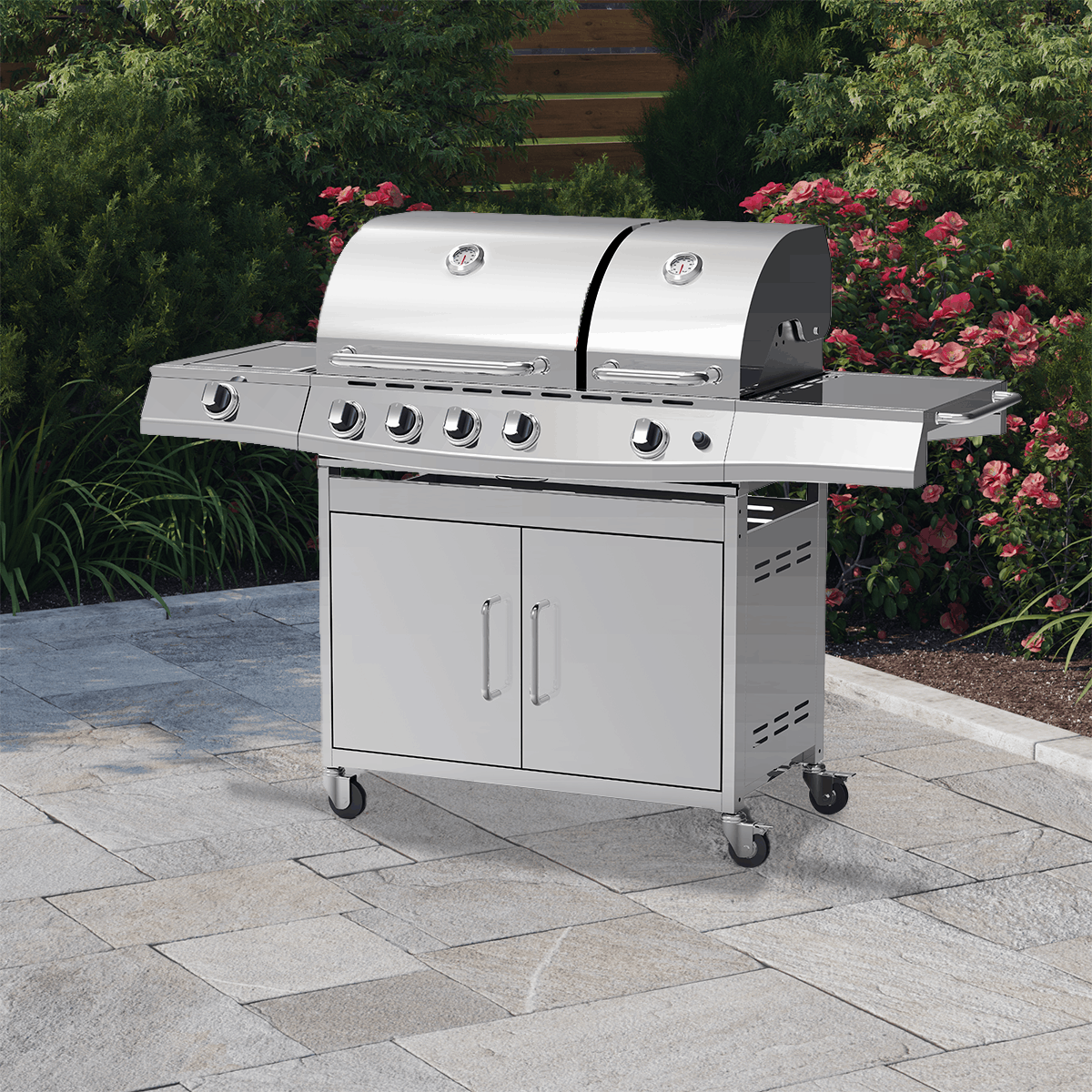
From Kamado to kettle grills, there are many options for a charcoal BBQ. But there’s a whole other world of types of BBQ – those that run on gas.
Even within the group of gas BBQs there are differences like:
- Portable or not
- Infrared plates or burners
- Freestanding or built-in gas BBQs
- Propane, butane, or even natural gas BBQs
And we’ll get into these types in just a moment. For now, let’s just clear up the different fuels.
Propane and butane are compressed and come either in cylinders for portable BBQ or larger tanks for freestanding ones.
Whereas natural gas connects to an existing gas line running through your residence. This eliminates the need to have your tanks refilled. Lastly, infrared gas BBQs still run on gas but heat ceramic plates without using open flames. Instead, they cook food using convection currents.
A portable gas stove is similar to a charcoal tray BBQ that you might buy at a supermarket. The difference is, it will feature sturdier construction and be reusable. A freestanding BBQ is what most of us have at home and might be portable(ish) with wheels.
A built-in gas BBQ is usually found in permanent outdoor cooking areas where there are no plans to move.
So why are gas BBQs so popular?
Key takeaways
- Gas BBQs can be portable, freestanding, or built-in
- Gas BBQs can run off of butane, propane, or natural gas
- Different gas BBQs can use infrared, open flame, or hot-plate cooking
- Fuel costs (long-term) can be cheaper than charcoal and wood
- Gas BBQs are quick to reach optimal temperature and easy to monitor/control
- Gas BBQs offer multiple cooking areas
- A gas BBQ’s cooking temperature won’t get as hot as charcoal BBQs though
There’s also a massive price range when it comes to gas BBQs. This is because of the many different types and sizes you can get, depending on your needs. For example, we’ve seen quality gas BBQs from as little as £299 to around £13,500 for a Kalamazoo hybrid!
Best Gas BBQs
And if you want some help, we’ve come up with the top 10 gas BBQs for the year – click to check them out!
For now, let’s start on the lower end of that range with portable gas BBQs.
Portable gas BBQ
A good portable gas BBQ can be the perfect addition to a picnic or camping trip. Their compact size and ease of use mean you can simply throw them in a bag and BBQ wherever you end up.
Similar to a portable charcoal BBQ, you might see portable gas BBQs that come in a box-like design. With a portable gas BBQ, though, you’ll need to be realistic with how much you can cook and for how many people.
They’re not the best choice if you’re catering for a little league game or a big gathering!
Portable gas BBQs: The what?
Portable gas BBQs are shaped like miniature BBQs with handles. You’ll also find some portable gas BBQs with wheels and a stand. This makes for easy setup and free-standing or tabletop use. Portable gas BBQs also connect via a nozzle to your gas line.
Portable gas BBQs: The why?
Portable gas BBQs are mostly designed for when you’re away from home and need to cook a small batch of food. They’re highly portable, easy to use, and convenient.
Key takeaways
PROS
- Compact designs
- Cheap
- Replaceable fuel source
- Great for trips, camping, picnics, and even home tabletop use
- Easy to use
CONS
- Limited cooking area
- Limited cooking capacity
- Can be expensive (compared to a freestanding gas BBQ) to constantly replace fuel
- Not suitable for indoor grilling
Gas Range BBQs
When we say the phrase ‘gas BBQ’ – most of us think of the BBQ out in the garden or on the patio. Something with between 3 and 6 burners with a big orange gas tank next to it.
Granted, you can also get built-in gas BBQs that are fitted into an island in your outdoor cooking area. But for brevity’s sake, we’ll lump these two types together as they function in much the same way. The only real difference is that you can move a freestanding gas BBQ.
Gas BBQs: The what?
Once connected to a gas source, the BBQ funnels gas to the BBQ’s burners. Upon ignition, these light (like a kitchen stove) and heat the grilling area. Gas BBQs cook food from below, allowing you to use direct or indirect heat if you have more than one level of grill rack.
Some BBQs with side burners also allow you to use flat-top cooking or to simply warm food outside the grilling area.
Gas BBQs: The why?
One of gas BBQs biggest selling points is that they’re easy. They’re easy to get the hang of as well as being quick to heat up. This all = convenience. You can come home after work, whip of your waterproof BBQ cover and have it heated and cooking in no time.
Compared to pellet and charcoal grills, gas also burns cleanly. This means that it won’t give your food any inherent flavour by cooking alone. This can be viewed as a positive or a negative.
Key takeaways
PROS
- Gas BBQs are quick to fire up and preheat
- Gas BBQs maintain temperature well
- They’re easy to get the hang off
- They require less clean up than charcoal grills
- Fuel is cheaper over time
- Grilling can be healthier on a gas BBQ
- Usually have a larger cooking area
CONS
- Gas BBQs won’t get as hot as charcoal ones for searing
- They’re more expensive at the outset than most charcoal grills
- It’s harder (/impossible) to smoke food
- Unlikely to get that ‘classic BBQ taste’
Are gas BBQs any good?
Gas BBQs offer quick, direct, and consistent heat. Gas BBQ’s reduced pre-heating time which makes them great for spontaneous and batch cooking. Some BBQ purists may say they lack that traditional smokey flavour but they offer convenience when barbecuing.
And if you’re sold on the idea of a gas BBQ, check out our list of the best gas BBQs on the market.
Electric BBQ


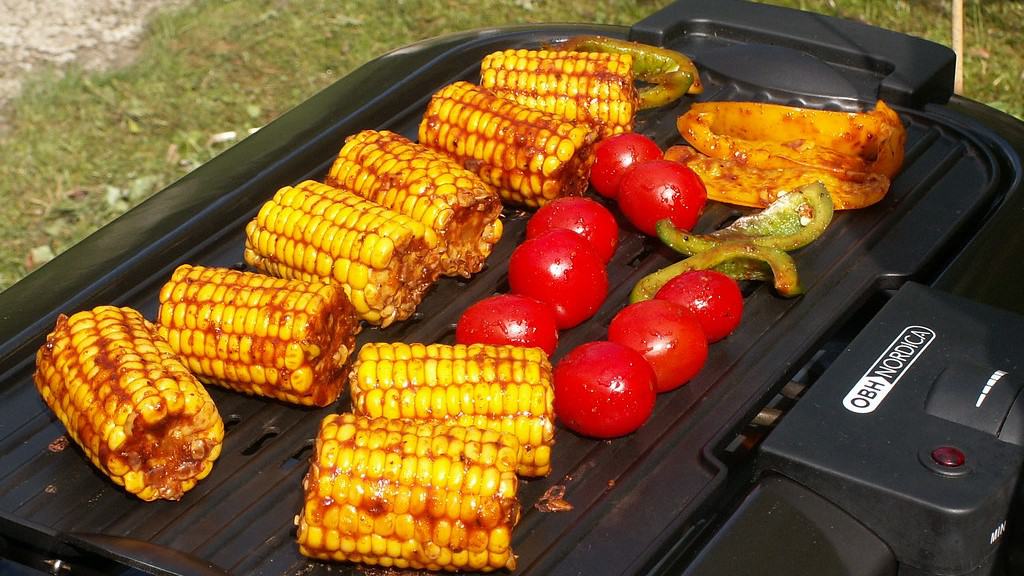
So we’ve covered all types of different charcoal BBQ and we’ve talked about gas BBQs. But remember we said that you can split BBQs by their fuel source?
Well, there’s one more contender – electric BBQs.
Electric BBQs: the what and the why?
Most electric BBQs tend to be smaller than freestanding gas or charcoal BBQs. Due to their ‘fuel’ source, they’re portable and make a good choice for people living in apartments or accommodation with restrictions on open fires.
Electric grills usually come with 120v or 220v power settings and are easy to use – simply plug them in and start cooking. Try to opt for an electric grill with features like:
- Good power consumption
- Accessible price point
- Easy to start
- Has a timer
Key takeaways
PROS
- Require little space
- Easy to use – simply find an outlet, plug in, and grill
- Portable
- Great for city dwellers – designed for indoor and outdoor use
- Little to no ‘fuel’ costs
- Relatively cheap
CONS
- No smokey BBQ taste/experience
- Small cooking area/capacity
- Requires electrical outlet – so portable, but only within reason
- Don’t get as hot as traditional BBQs
Can you use an electric grill indoors?
Yes - as long as it’s smokeless. As electric BBQs don’t create smoke they are safe for use indoors and outdoors.
BBQ Checklist
And if this post has got you in the mood for firing up the grill, be sure to check out our BBQ checklist first.
Complete Guide to BBQ Grills


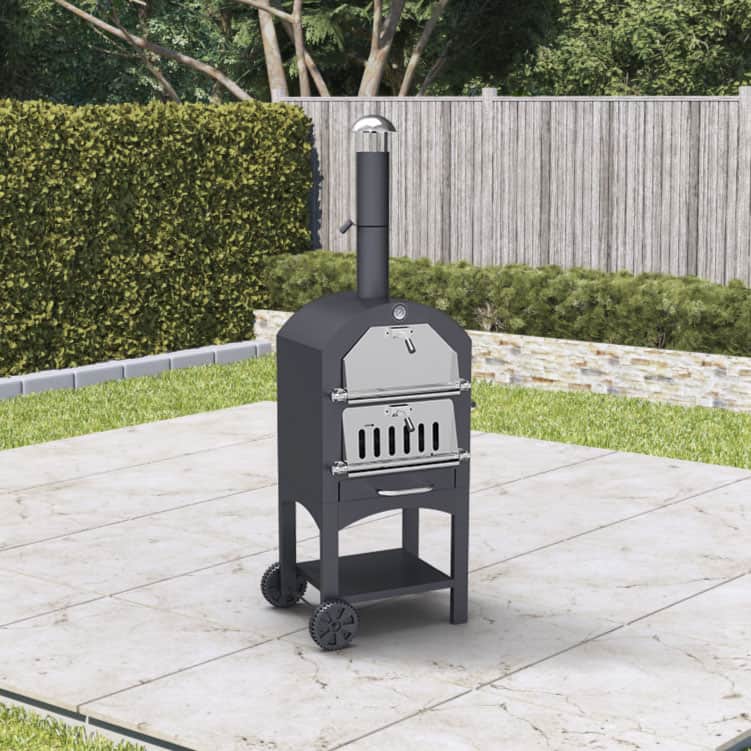
We hope you enjoyed our complete guide to all the different types of BBQs and BBQ grill. Hopefully, now you have a better understanding of how to align your requirements with a purchase.
For example, if you’re looking for the best BBQ grills under £300, you might look at a kettle charcoal BBQ or even a portable gas one. The options for BBQing are endless and depending on things like what volume of food you need to cook and your available space, there’s something for everyone.
And on top of all the charcoal and gas BBQs we mentioned, we’d also like to give:
Special mentions to
- Open-pit BBQs – Using a fire pit to grill on
- Open grills – Found throughout Southeast Asia. A metal or stone box filled with charcoal and wood. Great for street food like skewers!
- Rotisserie grills – They melt fat, baste the meat, and cook all at once
- Dual fuel BBQs – Dual fuel BBQs offer the best of both worlds for those who can’t miss out on that smokey flavour!
- 3-in-1 BBQs – 3-in-1 BBQs with pizza-cooking, smoking, and grilling capabilities
We just hope you don’t feel overwhelmed by all the choices out there! Just refer back to the start of this guide and ask yourself the questions we opened with. Then you’re sure to narrow down your needs to a surefire choice.
And if you want a bit more guidance once you’ve decided that, then feel free to:






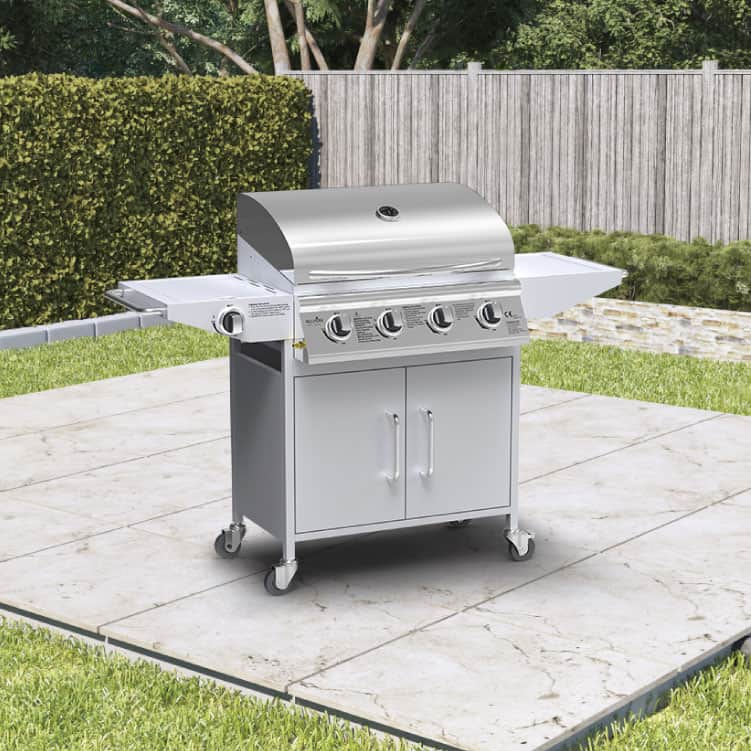

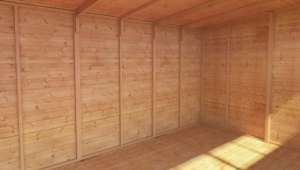


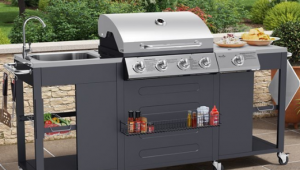


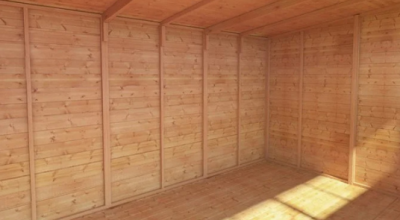
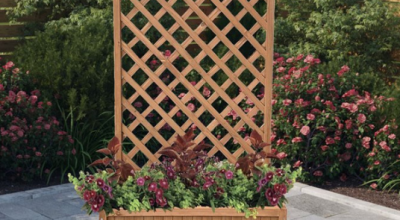
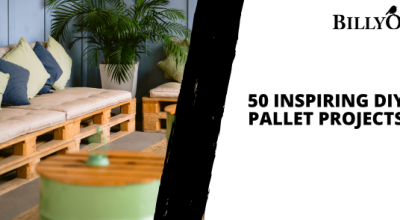
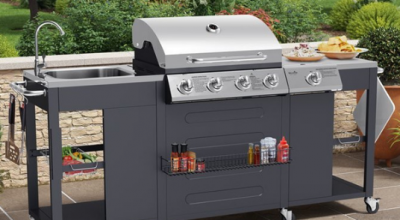

What do you think ?